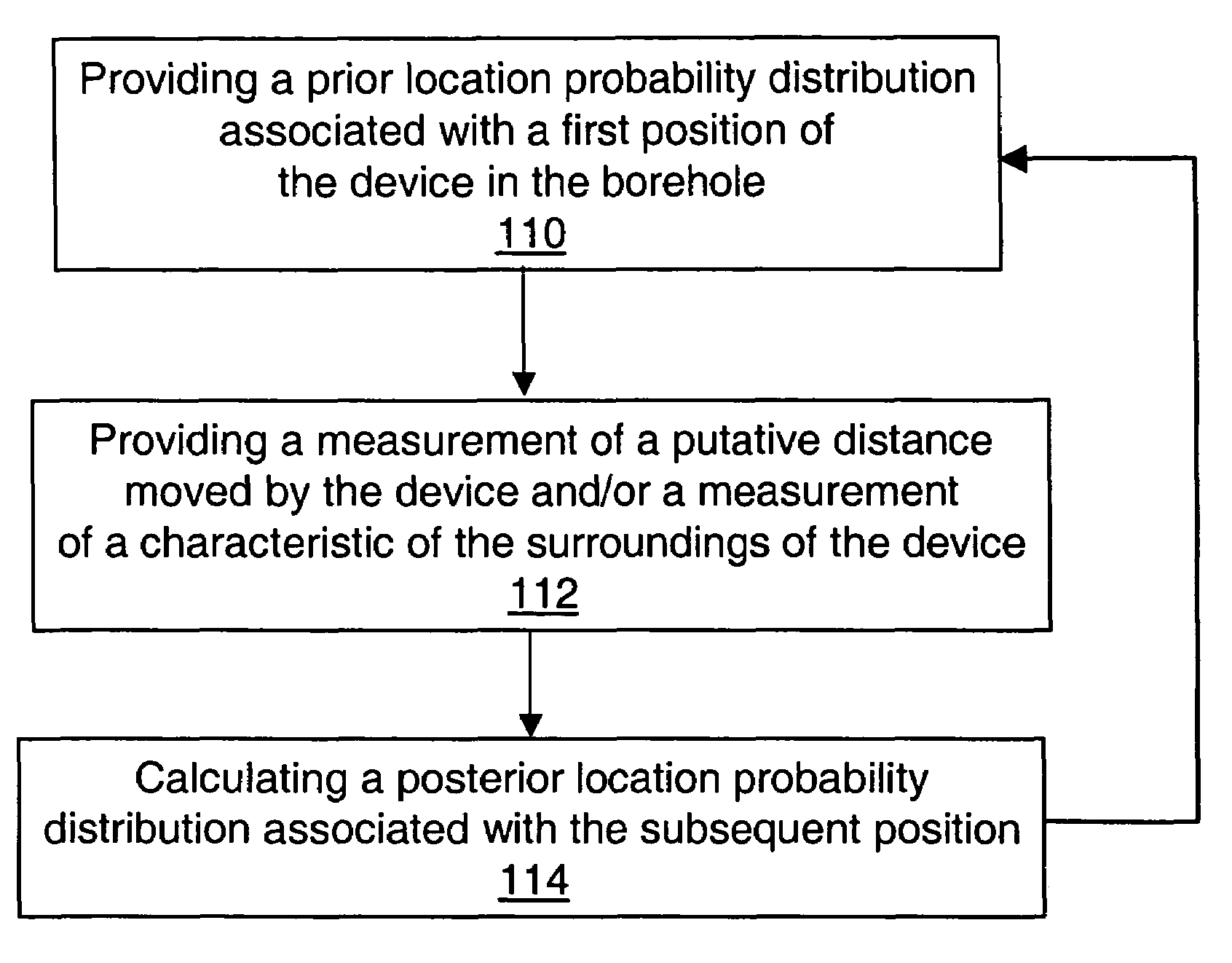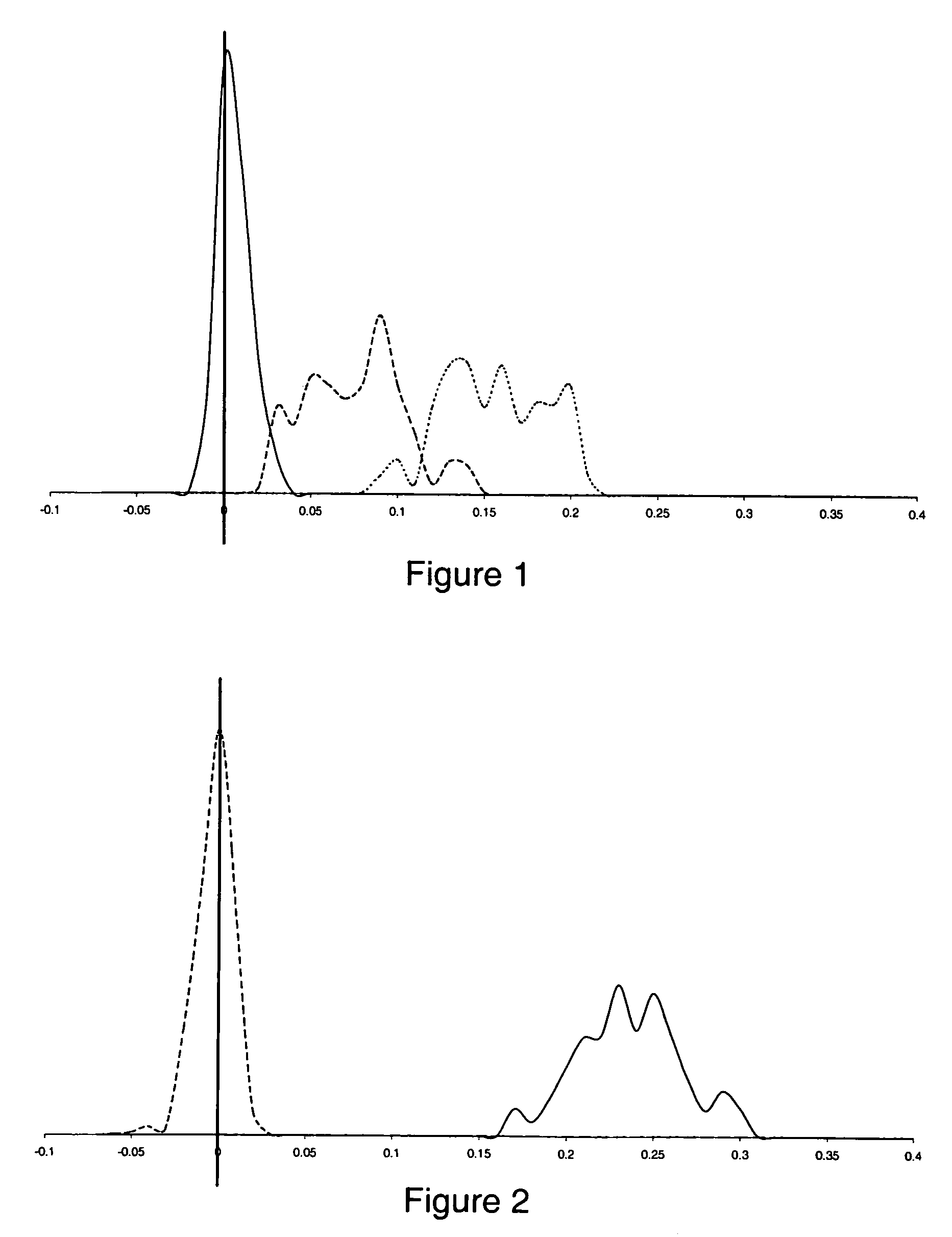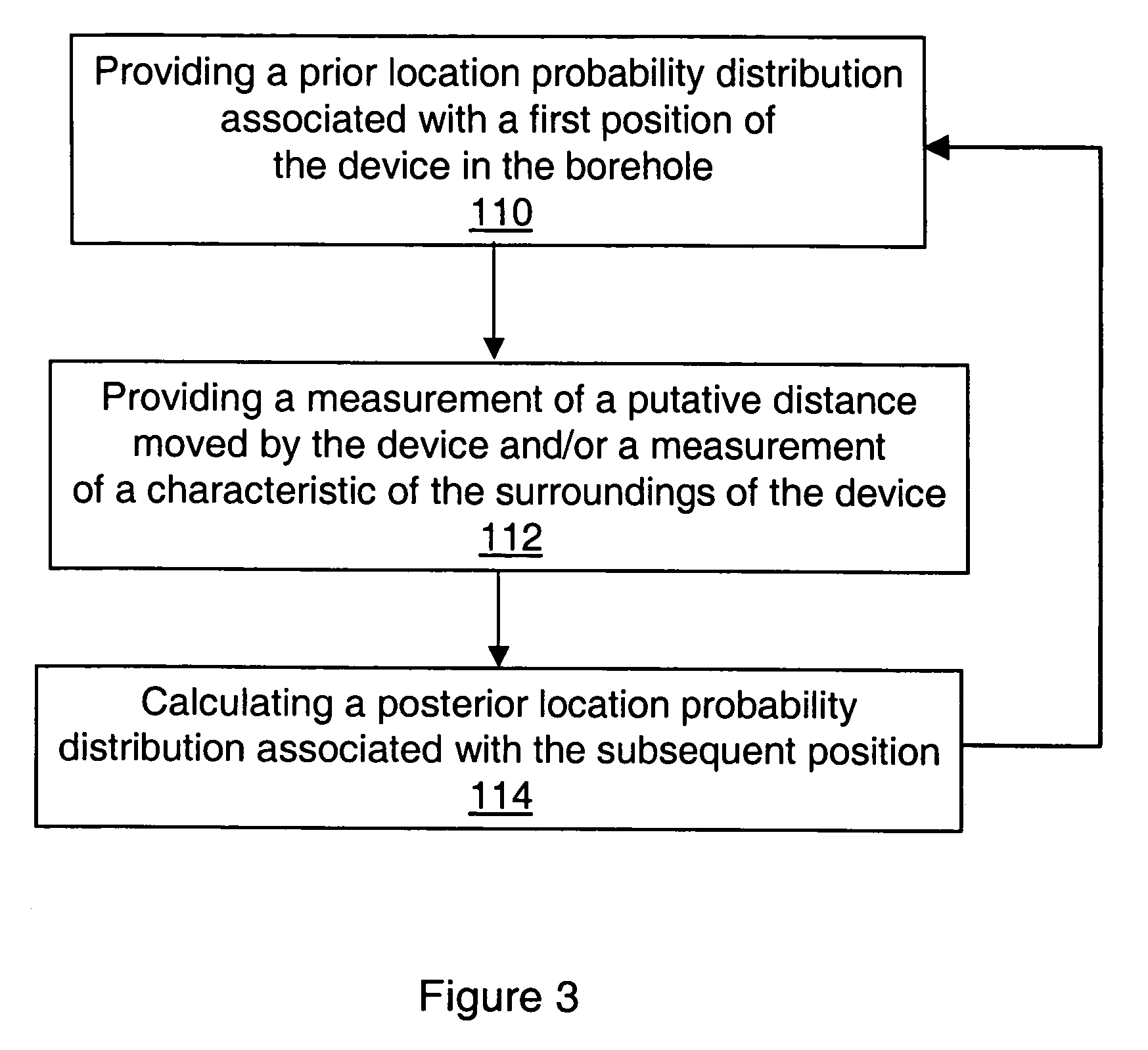Method and system for estimating the position of a movable device in a borehole
a technology of moving devices and boreholes, applied in the field of methods and systems for estimating the position of moving devices in boreholes, can solve problems such as double integration, inaccurate models of elasticity and friction, and various types of errors in approaches. to achieve the effect of improving the accuracy of downhole position measurements
- Summary
- Abstract
- Description
- Claims
- Application Information
AI Technical Summary
Benefits of technology
Problems solved by technology
Method used
Image
Examples
example
[0061]We have applied the above theory to the example of a downhole autonomous robot. Dead reckoning information is obtainable from an odometer fitted to the robot's wheels. This is liable to errors due to slippage, and the conditional PDF, P(d|a,d0), may be used to model the effect of attempting to move the distance registered by the odometer. Alternatively, inertial navigation may be used, with its own error sources and stochastic model of P(d|a,d0).
[0062]Some landmark information is obtainable from a CCL that detects casing joints in a cased hole. Other landmark detection schemes may also be employed, such as detecting the presence of casing perforations. For each landmark, we can devise a mathematical model that gives the probability of detecting the landmark from an arbitrary position, P(o|d).
[0063]Map-matching information can come from the increase in pressure and temperature with depth, and from any other suitable logging sensor (such as a gamma-ray sensor). Less precise map ...
PUM
 Login to View More
Login to View More Abstract
Description
Claims
Application Information
 Login to View More
Login to View More - R&D
- Intellectual Property
- Life Sciences
- Materials
- Tech Scout
- Unparalleled Data Quality
- Higher Quality Content
- 60% Fewer Hallucinations
Browse by: Latest US Patents, China's latest patents, Technical Efficacy Thesaurus, Application Domain, Technology Topic, Popular Technical Reports.
© 2025 PatSnap. All rights reserved.Legal|Privacy policy|Modern Slavery Act Transparency Statement|Sitemap|About US| Contact US: help@patsnap.com



